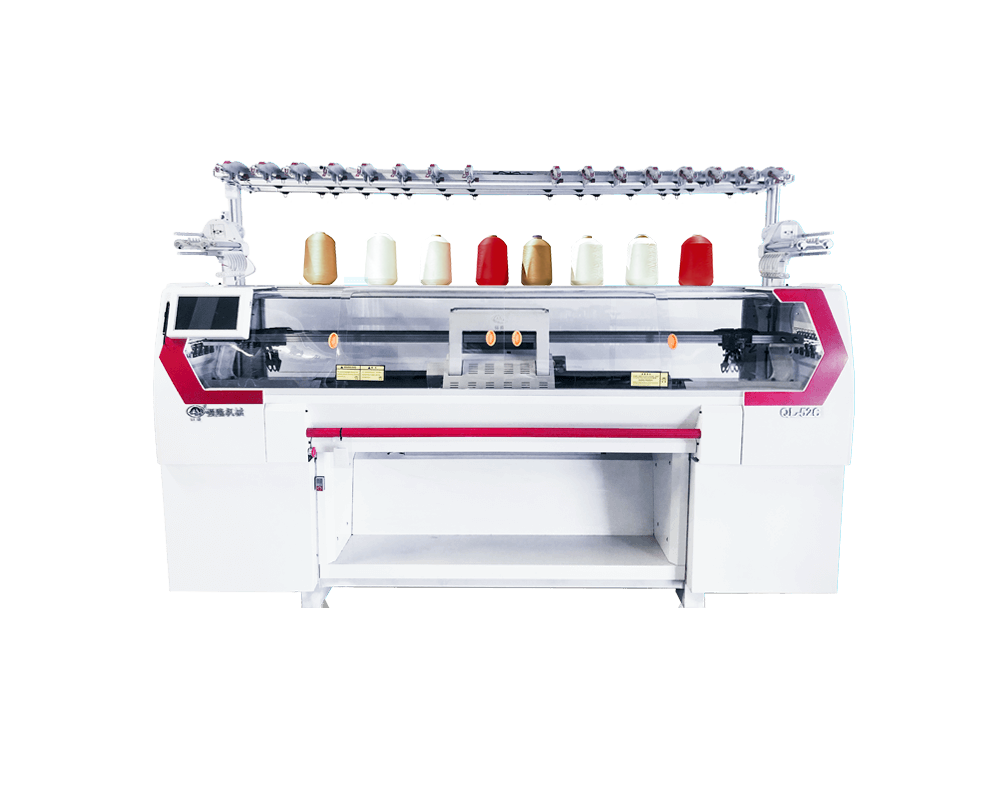Tongxiang Qianglong Machinery Co., Ltd. is high-tech China wholesale computerized flat knitting machine manufacturers, specialized in designing, developing, and manufacturing Knitting Machinery..
A 3D Flyknit knitting machine offers versatility in terms of the materials it can work with, including a wide range of yarns and fibers. Here are some common materials that can be used with a 3D Flyknit knitting machine:
Natural Fibers:
Cotton: Soft, breathable, and comfortable, suitable for a variety of garments and textiles.
Wool: Warm, insulating, and moisture-wicking, commonly used in winter apparel and accessories.
Silk: Smooth, lustrous, and lightweight, ideal for luxurious garments and fine textiles.

Synthetic Fibers:
Polyester: Durable, wrinkle-resistant, and quick-drying, often used in sportswear, activewear, and outdoor apparel.
Nylon: Strong, abrasion-resistant, and lightweight, commonly used in outerwear, swimwear, and lingerie.
Acrylic: Soft, wool-like, and machine washable, suitable for knitted garments, blankets, and accessories.
Blends:
Many 3D knitting machines can handle yarn blends, which combine different fibers to achieve specific properties such as durability, elasticity, or moisture management. Common blends include cotton-polyester, wool-acrylic, and nylon-spandex.
Specialty Materials:
Carbon Fiber: Lightweight, high-strength, and stiff, used in aerospace, automotive, and sporting goods for structural reinforcement.
Kevlar: Extremely strong, heat-resistant, and abrasion-resistant, commonly used in protective clothing, bulletproof vests, and industrial applications.
Metallic Yarns: Yarns incorporating metallic fibers or coatings for decorative effects in fashion, accessories, and textiles.
High-Performance Fibers:
High-performance fibers such as aramid fibers (e.g., Nomex, Twaron) and ultra-high molecular weight polyethylene (UHMWPE) fibers (e.g., Dyneema, Spectra) offer exceptional strength, heat resistance, and cut resistance. They are used in applications requiring extreme durability and protection, such as ballistic armor, industrial ropes, and safety gloves.
Recycled and Sustainable Fibers:
Some 3D knitting machines support the use of recycled fibers or sustainable materials such as organic cotton, recycled polyester, or bamboo yarns, contributing to environmentally friendly manufacturing practices.
The compatibility of materials with a 3D Flyknit knitting machine depends on factors such as the machine's specifications, needle types, and programming capabilities. Manufacturers may provide guidelines and recommendations for selecting suitable materials based on the intended application and desired properties of the finished product.
Natural Fibers:
Cotton: Soft, breathable, and comfortable, suitable for a variety of garments and textiles.
Wool: Warm, insulating, and moisture-wicking, commonly used in winter apparel and accessories.
Silk: Smooth, lustrous, and lightweight, ideal for luxurious garments and fine textiles.

Synthetic Fibers:
Polyester: Durable, wrinkle-resistant, and quick-drying, often used in sportswear, activewear, and outdoor apparel.
Nylon: Strong, abrasion-resistant, and lightweight, commonly used in outerwear, swimwear, and lingerie.
Acrylic: Soft, wool-like, and machine washable, suitable for knitted garments, blankets, and accessories.
Blends:
Many 3D knitting machines can handle yarn blends, which combine different fibers to achieve specific properties such as durability, elasticity, or moisture management. Common blends include cotton-polyester, wool-acrylic, and nylon-spandex.
Specialty Materials:
Carbon Fiber: Lightweight, high-strength, and stiff, used in aerospace, automotive, and sporting goods for structural reinforcement.
Kevlar: Extremely strong, heat-resistant, and abrasion-resistant, commonly used in protective clothing, bulletproof vests, and industrial applications.
Metallic Yarns: Yarns incorporating metallic fibers or coatings for decorative effects in fashion, accessories, and textiles.
High-Performance Fibers:
High-performance fibers such as aramid fibers (e.g., Nomex, Twaron) and ultra-high molecular weight polyethylene (UHMWPE) fibers (e.g., Dyneema, Spectra) offer exceptional strength, heat resistance, and cut resistance. They are used in applications requiring extreme durability and protection, such as ballistic armor, industrial ropes, and safety gloves.
Recycled and Sustainable Fibers:
Some 3D knitting machines support the use of recycled fibers or sustainable materials such as organic cotton, recycled polyester, or bamboo yarns, contributing to environmentally friendly manufacturing practices.
The compatibility of materials with a 3D Flyknit knitting machine depends on factors such as the machine's specifications, needle types, and programming capabilities. Manufacturers may provide guidelines and recommendations for selecting suitable materials based on the intended application and desired properties of the finished product.

 English
English 简体中文
简体中文
 Chinese
Chinese English
English











